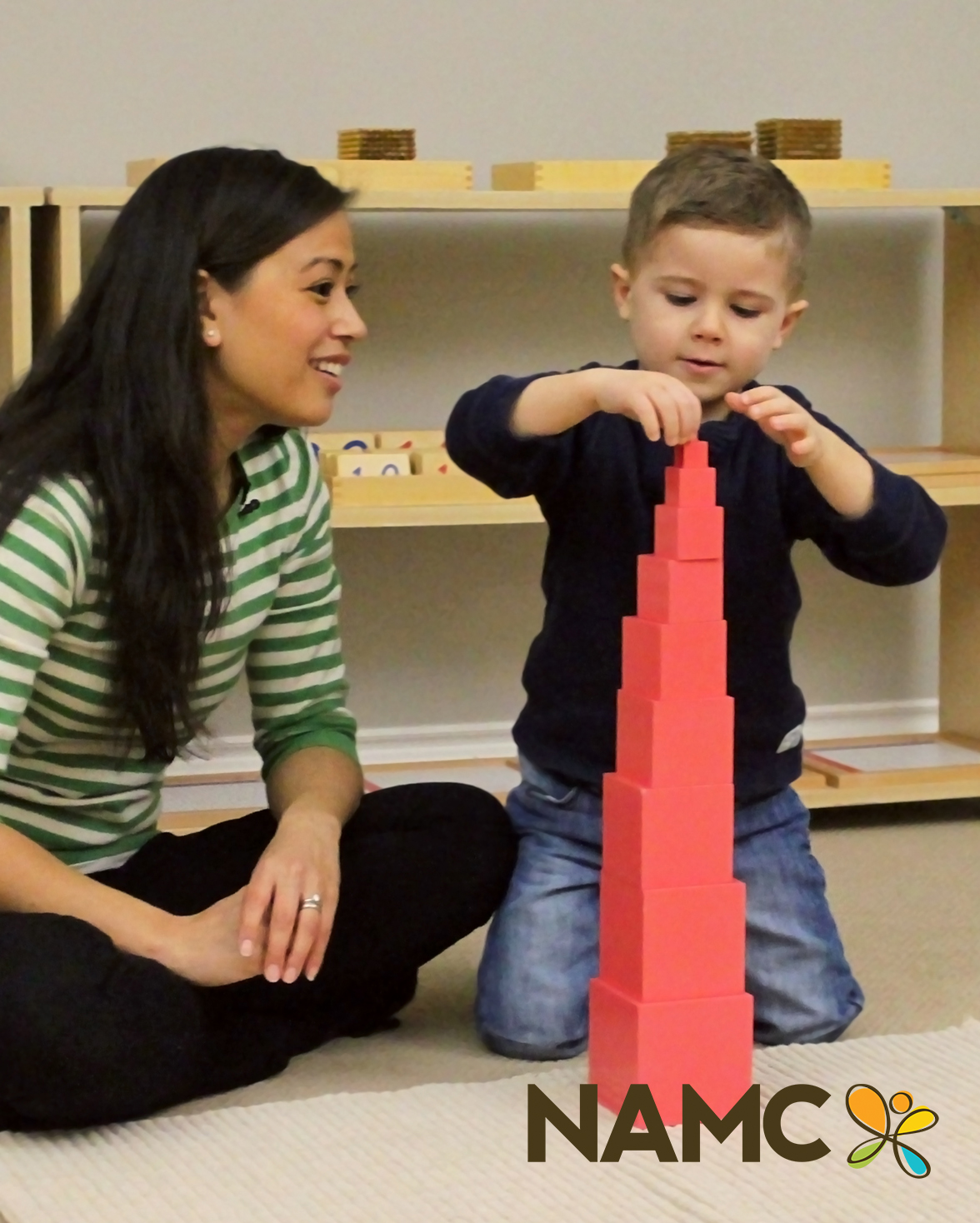
Children love the Pink Tower — it’s fun and immensely satisfying for them to complete the tall tower by stacking the cubes on top of each other. But we know the material provides them with much more than enjoyment. As they choose the correct cube to stack, the child is practicing a number of cognitive and physical skills.
He is practicing fine motor skills as he carefully picks up the smallest cube with his fingers and then stretches his hands to pick up the largest of cubes. He is also working on gross motor skills as he moves and stacks the cubes. He is developing his visual discrimination as he considers the size of each cube, his tactile sense as he feels the smooths sides of the cubes, his baric sense as he feels the different weights of the cubes, and his kinesthetic or muscular sense as he positions his body to stack the cubes. He is also building his ability to discriminate as he judges the length, width, and height of the cubes. He is learning to grade and understand sequence and order.
All of this hands-on work also allows him to experience the concept of the natural numbers from 1 to 10 (there are ten cubes in the Pink Tower), the decimal system, and the relationship between cubing and volume, and prepares him for future work in geometry. All that learning in ten pink cubes! Montessori is truly remarkable!
Learn more about the Pink Tower and other Montessori math materials by purchasing NAMC’s Montessori Early Childhood Curriculum or enroll in our Montessori Diploma Program!
As much as possible, NAMC’s web blog reflects the Montessori curriculum as provided in its teacher training programs. We realize and respect that Montessori schools are unique and may vary their schedules and offerings in accordance with the needs of their individual communities. We hope that our readers will find our articles useful and inspiring as a contribution to the global Montessori community.
© North American Montessori Center - originally posted in its entirety at Montessori Teacher Training on Monday, October 19, 2020.
© North American Montessori Center - originally posted in its entirety at Montessori Teacher Training on Monday, October 19, 2020.

0 comments:
Post a Comment
Have questions or comments? Let us know what you thought about this article!
We appreciate feedback and love to discuss with our readers further.